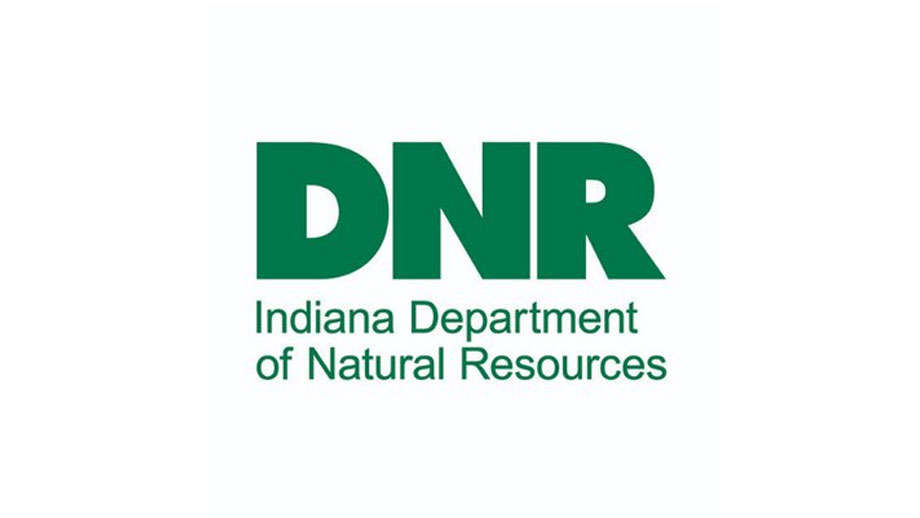
While for some, June marks the beginning of summer, for others it signifies something more important, with the birthstone month being the pearl.
A birthstone is a gemstone that represents a person’s birth month, or zodiac sign. From January through December, each month is correlated with specific gemstones. These birthstones are believed by many to have specific characteristics, and hold certain powers that affect its wearer, including bringing good fortune, or health.
The fresh water pearl, in particular, also has links to Indiana rivers in past centuries.
Over most of the eastern U.S., the industry had a brief “boom ..and bust” over fresh water pearls, and pearl button making.
Prior to the Civil War, button factories relying on shells, horns, and bone had been rare.
In 1900 it was reported that the 'Arkansas' pearl boom' had carried just as much excitement as the famous old-time gold rush of the West.

The pearl boom had reached its peak in Arkansas between 1905 and 1910. Around that time, the price of shells were reported to have suddenly risen from $4 to around $15 a ton.
Fishermen could be found all over Midwestern steams looking for mussels, many hauling in shiny treasures onto their johnboats.
It wasn't long before the excitement hit the shores of Indiana rivers, as well.
It was said that in 1909, 'musselers' on the Wabash River were reported to have found around $7,000 worth of pearls in one week.
When European settlers first came to Indiana, years prior to the pearl boom, midwestern rivers were reported to be plentiful of mussels.
In fact, over 400 species of muscles were estimated to be in the Ohio Valley in 1800.
It was recorded that Indiana settlers had been diving for pearls hidden in freshwater mussels, dating back all the way to 1846, when early settlers from the Winamac area had founded the Pulaski County Pearl Diver Association.

The Indianapolis Journal reported that the business had been started after a Pulaski County resident had read about a fisherman who had found a pearl of rare value, which sold for hundreds of dollars. The residents, who became inspired, began searching the bed of the Tippecanoe River, until he finally found a mussel shell containing a small pearl.
A meeting was soon called among the local farmers living near the banks of the river, pulling in support to start a company based on the natural pearls found in the area.
Stock holders for the business ceased work on their farms to work on the rivers, in hunt for the mussels, and their hidden treasures.
Initially, several hundred dozen pearls were found, and the company sent a trusted agent to St.Louis, Mo, to get an estimate on their cash value.
The agent relayed to the stockholders that in St. Louis at that time, each pearl was appraised to be worth around $25 to $100 a piece.
Workers for the Pulaski County Pearl Diver Association began working day and night, soon collecting several more bushels of pearls.
The bushels were then sent to Cincinnati, where the agent were told the pearls had been worth around just $1 a bushel.
Not wanting to believe this news, the agent then went to Philadelphia, where he was told that the pearls had been worth anywhere between $1 to $2 a piece, and some had even been worth just 50¢ a bushel.
When the agent returned to give the news to the Pulaski County Pearl Diver Association, the company quickly came to an end.
Needing to feed their families, all of the the 'pearl divers' soon returned to farming.
Winamac wasn't the only river town in Indiana to take advantage of the 'pearl boom.'
In 1908, patients from the Northern Indiana Insane Hospital spent part of the summer hunting for pearl-bearing mussels along the Wabash River near Logansport. The Plymouth Tribune had reported the inmates finds, stating that one elderly man had gotten lucky, finding several pearls worth around $200 each. The man hoarded the find from local jewelers, and kept them in a bottle to look at instead.
As word of the worth of the freshwater pearl spread, fisherman took the rivers, trying to exploit the bountiful waterways.
The button-making industry also grew in leaps and bounds. Hundreds of small factories opened between the 1890's to the 1940's in the Midwest, producing glossy 'mother-of-pearl-buttons.' In Indiana,button factories could be found in Mishawaka, Lawrenceburg, Leavenworth, Madison, and Shoals.
By 1946, exhaustion of shell banks throughout the Midwest quickly put an end to both the button industry.
The business of collecting fresh water pearls soon became a trend of the past for the Midwest.
The havok it had wreaked on the ecosystem of local rivers also welcomed its downfall.
Centuries ago, the Tippecanoe River had been home to the world’s largest population of clubshell mussels. Due to human-caused water quality degradation, the mussel population in local Indiana rivers have became significantly smaller.
Purdue University's Forestry and Natural Resource extension currently strive to spread awareness of protecting mussels in local rivers, for maintaining good water quality, healthy fish and wildlife populations, and recreational use of the river.
As of 2024, the Tippecanoe River remains home to one of the most diverse populations of freshwater mussels in the United States.
Six species of freshwater mussels live in the Tippecanoe River are also federally listed as endangered, or threatened under the Endangered Species Act.
Being federally listed means that the mussels are endangered, and at risk to become extinct.
Many of the mussels from the Tippecanoe River are protected from “take,” which means they can't be intentionally killed, harmed, or harassed.
The Endangered Species Act, administered by the U.S. Fish and Wildlife Service, helps protect these mussels, and other native animals listed as endangered.
In addition to the endangered mussels, the Tippecanoe River is also home to over 40 non-listed species of freshwater mussels. The river is said to be one of the healthiest in Indiana, and The Nature Conservancy lists the Tippecanoe River has listed it one of the top ten rivers in the U.S. that in most need for preservation.
(Shell photo above is provided by Purdue University extensions for Forestry and Natural Resources. More information on mussels, and what you can do to protect them, can be found at www.purdue.edu/extension/mussels/)


 Man killed trying to rescue dog on frozen pond
Man killed trying to rescue dog on frozen pond
 Hector and Debbie Fernandez named Citizens of the Year
Hector and Debbie Fernandez named Citizens of the Year
 Indiana Senate accepting applications for 2026 Page Program
Indiana Senate accepting applications for 2026 Page Program
 4C Health intends to better serve, hire veterans
4C Health intends to better serve, hire veterans
 Indiana Farm Bureau Insurance surpasses 2024 volunteer impact, continues Giving Tuesday initiative
Indiana Farm Bureau Insurance surpasses 2024 volunteer impact, continues Giving Tuesday initiative
 Governor Braun announces "Family First Workplace” policy to support working families
Governor Braun announces "Family First Workplace” policy to support working families
 ISP called in to assist Pualski County to serve warrant, make arrests
ISP called in to assist Pualski County to serve warrant, make arrests
 USPS asks public to clear snow and ice to help deliveries
USPS asks public to clear snow and ice to help deliveries




